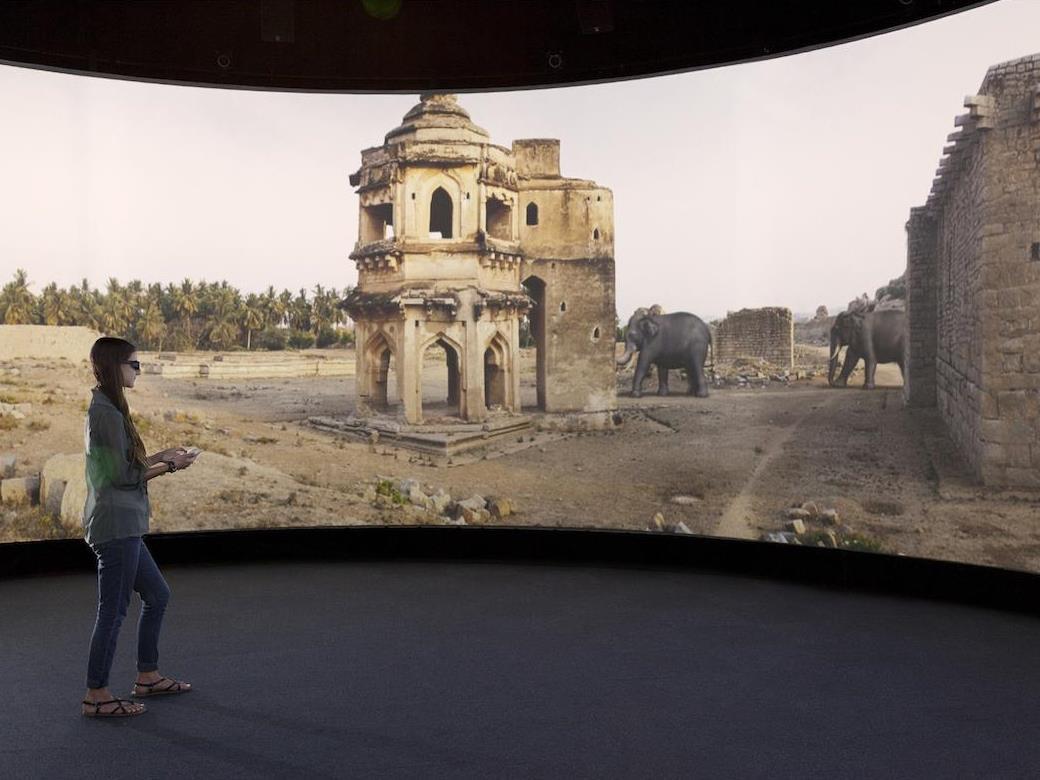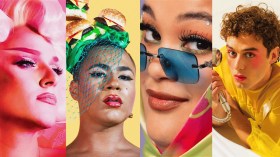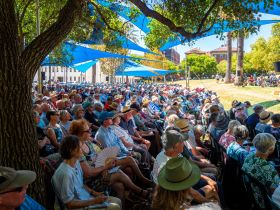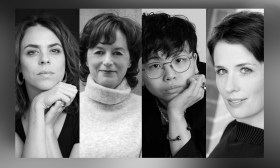PLACE-Hampi 2012, at Kaladham, Karnataka, India © Sarah Kenderdine and Jeffrey Shaw. Photo: silversalt.
Art, design and creative media students benefit from an enriched broad education, exploring more than one discipline. In the University of New South Wales’ Bachelor of Media Arts and Bachelor of Design programs, students develop their knowledge, skills and experience in a range of mediums, equipping them for an increasingly digitised future where flexible creative skills will help graduates stand apart.
‘Design is the process of materialising preferred futures,’ said Professor Cameron Tonkinwise from UNSW’s Faculty of Art and Design. ‘Materialising futures does not just mean making this or that new thing. It means changing the way people live, opening up a new world. Any design worthy of the name transitions a range of everyday practices into new ways of living and working.
‘Any act of design therefore involves multiple kinds of persuading and making. Any creative practitioner who only knows one particular discipline will only ever be acting in service of other people’s visions for the future,’ Tonkinwise said.
The Bachelor of Media Arts (BMA) is an industry-aligned program that provides students with a strong foundation across contemporary creative media and technology production. Students take foundation studies in Media Arts before choosing an individual studio practice in the latter stages of the degree, including animation, video, sound and image, and interactive and cross media technologies.
A multi-disciplinary approach to creative practice will set students up for the future. Alumni of the BMA program will find work across the entertainment, art and design, creative media and technology industries.
‘I take digitisation to mean the process by which almost all everyday practices are mediated through data-manipulating devices,’ said Tonkinwise. ‘Digitisation means that no thing is any longer just what it is. A screen can be a keypad, and a motion detector, and a healthy living disciplinarian. This morphability in things is something that UNSW Art and Design graduates, skilled in creative practices and media arts, understand expertly, as producers, persuaders and deciders.’
For prospective students interested in developing knowledge, skills and capacities for design thinking, UNSW’s Bachelor of Design offers an integrated education. Linking key specialisations of design such as graphics, communication, objects, textiles, ceramics, jewellery, media and technology, the program encourages graduates to build their own pathways to become a confident adaptable design professional able to engage fully with the multidimensional nature and fast moving dynamics of contemporary design practice.
For those interested in combining a creative practice with a professional qualification, there are also double degrees available. Design students can undertake a double degree in Education, Commerce or Media PR and Advertising, while Media Arts students can pair their degree with a Bachelor of Computer Science or secondary education.
These programs can offer students further flexibility to widen their career prospectives and better prepare them for the world of work, where few people work alone or in just one discipline. Graduates of dual degrees gain both creative and professional skills, complementary tools which open even more doors and create more opportunities in the ever changing creative economy.






